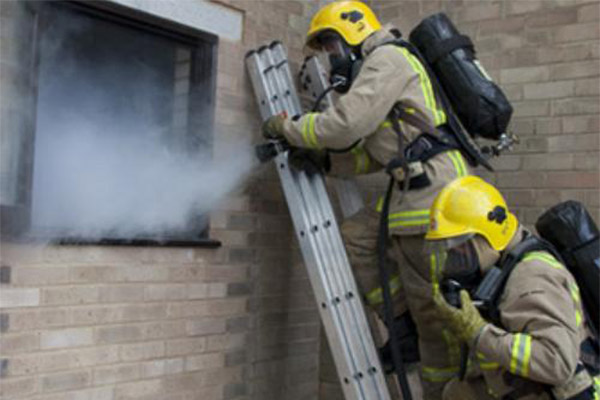Study Finds Failure Points in Firefighter Breathing Apparatus
In fire experiments conducted in uniformly furnished, but vacant Chicago-area townhouses, National Institute of Standards and Technology (NIST) researchers uncovered temperature and heat-flow conditions that can seriously damage facepiece lenses on standard firefighter breathing apparatus, a potential contributing factor for first-responder fatalities and injuries.
The findings are detailed in a report from a research study sponsored by the U.S. Fire Administration and Department of Homeland Security. The work is an important step toward improving what may be the most vulnerable component of a firefighter's protective gear in high-heat conditions: the facepiece lenses of the so-called self-contained breathing apparatus, or SCBA.
Failure of the lens can expose a firefighter to toxic gases and can result in burns to the respiratory tract as well as asphyxiation. In several SCBA-related deaths, degraded masks were found affixed to the faces of victims while their equipment continued to supply air.
Rooms were equipped with devices to record temperatures rapidly at regular intervals between ceiling and floor. Facepieces also were equipped with sensors, on the inside and the outside of the lenses and in the immediately surrounding space. A gauge to measure heat flow, or flux, was positioned next to the facepieces.
The most devastating damage occurred in a scenario akin to one in which a firefighter would enter a burning living room from a front porch. The living room fire smoldered for five minutes after ignition. Opening the front door literally breathed life into the smoldering fire. The rush of heat from the now blazing living room transformed a relatively cool environment on the porch into an inferno. The SCBA lens's exterior surface temperature reached 280 degrees Celsius (536 degrees Fahrenheit), about the midpoint of the range of published polycarbonate melt temperatures. The lens developed a significant hole, according to the NIST report. "The next step," the NIST researchers write, "is to identify the exposure limit just before thermal degradation occurs. Data on the limits of the equipment would be valuable information for the fire service to help prevent further injuries and fatalities related to SCBA apparatus failure."

